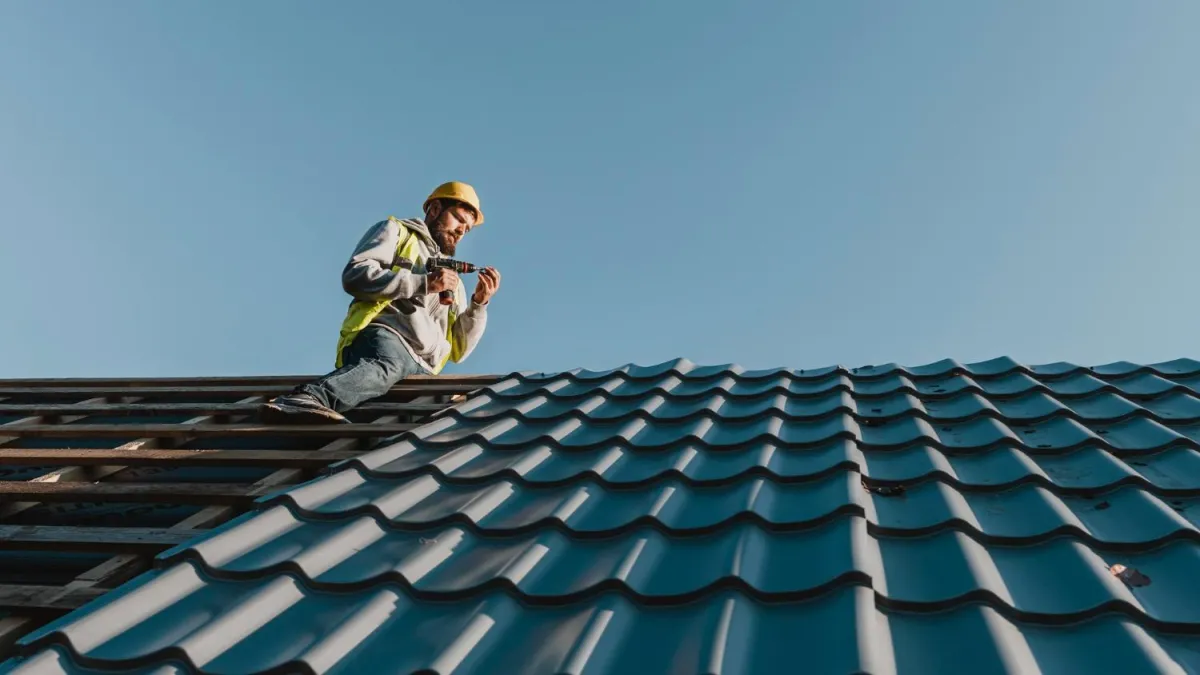How to Fix a Leaking Roof: Step-by-Step Guide for Homeowners

Roof leaks can cause serious damage to your home if not fixed quickly. This guide shows you how to find and repair common roof leaks on your own. We'll walk through checking for damage, identifying water entry points, getting the right supplies, making repairs, and preventing future issues. These simple steps can help you handle basic roof fixes, but complex repairs may require expert roofers.
Assessing the Roof Damage
Start by checking both inside and outside your home for signs of leaks. Inside, look for water stains on ceilings or walls, peeling paint, or mold spots that show water damage. Outside, check for missing, cracked, or bent shingles, plus any leaves or moss buildup. Use a ladder safely to get a closer look at your roof, paying special attention to areas around chimneys, vents, and skylights. Look for cracked metal pieces or damaged seals around these spots. Note any soft areas or sagging parts of the roof, as these show more significant issues. This careful check helps you locate the leak and determine the necessary repairs.
Locating the Leak
Finding the exact spot where water enters your roof takes some detective work. Follow any water stains you can see back to where they start on the roof. Here are three key steps to find the leak:
1. Inspect the Attic: Check for water stains, mold, or dampness in the attic, as these show the general area of the leak.
2. Examine the Roof: Look for missing or broken shingles, cracked metal pieces, or other damage on the roof that may allow water to enter.
3. Use a Hose: Have someone help by spraying water on different roof sections while you watch from inside to see where water comes in.
Gathering Necessary Materials
Make a list of everything you need based on the cause of the leak and how to fix it. If damaged shingles are the problem, get replacement shingles, roofing nails, a hammer, and a ladder. For metal flashing issues, gather sealant, a putty knife, and new flashing pieces. If a roof vent is damaged, you'll need a new vent and roofing cement. Don't forget safety gear like gloves, safety glasses, and shoes that won't slip. Have a bucket or tarp ready to catch any water still coming through. Getting these materials ready first makes the repair job go smoothly.
Repairing the Roof
Once you have all your materials, it's time to fix the source of the leak. Follow these repair steps:
1. Locate the Leak: Check inside your home for water stains or mold to locate the leak.
2. Remove Damaged Shingles or Roofing Material: Take off any broken shingles or roofing material around the leak area.
3. Apply Roofing Cement or Sealant: Use roofing cement or sealant to patch the leak, ensuring a complete seal to prevent water from entering.
Preventing Future Leaks
Keep your roof in good shape by checking it regularly for wear and damage. Look at shingles for cracks, curling, or missing pieces. Check for loose shingles that wind may have lifted. Make sure metal pieces around chimneys, vents, and skylights are tight and not rusted. Watch for green growth like algae or moss, which shows too much moisture. Cut back tree branches that hang over and might scrape the roof. Keep gutters clean so water doesn't back up and overflow onto the roof. Staying on top of these simple tasks prevents future leaks and makes your roof last longer.
Related Topics:
Our Team

John Doe

John Doe

John Doe

John Doe
Office:
North Carolina
Call:
(704) 769-2468
Email:



